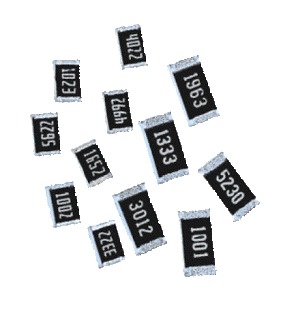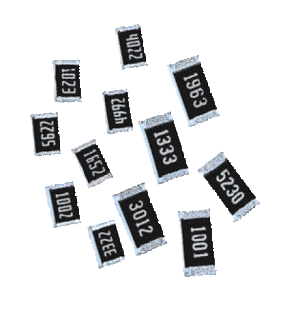Resistors which are based on SMT technology are called SMT resistors which are one of the members of the SMD family or surface mount device family.
By: S. Prakash
The electronic equipment of various types such as televisions, commercial communication equipment, cell phones, research equipment of high technology and MP3 player uses the SMD resistors.
Basic Construction of SMD Resistor
The shape of the SMD resistor is rectangular.
There is a presence of a metallized area in the chip resistors at any one side of their body which in turn enables the contact of the printed circuit board with the chip resistor by using the solder.
A ceramic substrate is one of the components of the resistor and a metal oxide film is deposited over it. The resistance of the resistor is determined by the actual film’s length and thickness.
Since metal oxide is used to manufacture the SMD resistors which enable the resistor to be highly stable along with the tolerance level also being high. The element with which a ceramic substrate is made up of is high alumina ceramic.
The use of the high alumina ceramic in the SMD resistors provide stable insulation on the basis of the resistive metal oxide element on which the resistor is set down.
The terminations of the SMD resistors are also important.
The contact which the SMD resistor needs to make with the chip resistor’s resistive element needs to be reliable while at the same time it should provide solderability of very high levels.
Such high levels are achieved through the usage of the nickel based layer to make an internal connection. At the same time and outer layer which is tin based is used to make the outer connection thereby achieving solderability of very high levels.
Packages of SMD Resistors
There are variety of different packages in which the SMD (Surface mount resistors) come. The size in which the packages of the chip resistors come has decreased significantly because of the advancement of the technology over a period of time.
Specifications of SMD Resistors
There are a large number of companies which are involved in the manufacturing of the SMD resistors. The specifications of the SMD resistors thus vary based on the specifications provided by the manufacturer.
Thus, while deciding on the requirement of the SMD Resistors, one needs to check the rating of the manufacturer for the given SMD resistor. At the same time one can anticipate the rating at a general level.
Power Rating: Due consideration needs to be provided to the power rating in a given design.
The power levels of the designs which use the SMD resistors are of very smaller levels when compared to the circuit designs which use wire ended components.
Tolerance: The tolerance values of the Surface Mount Resistors which use the metal oxide film for their manufacturing is very close.
The tolerance levels which are available at a large scale include 1%, 5%, and 2%. Additionally, the values of the 0.1% and 0.5% can be achieved for the applications which are specialist applications.
Temperature Coefficient: The temperature coefficient values of the Surface Mount Resistors which use the metal oxide film for their manufacturing is very high.
The temperature coefficients levels which are available at a large scale include 100 ppm/C and 25,50 ppm/C.
Applications of SMD Resistors
There are a variety of designs for which the use of the surface mount resistors is done.
The size of the SMD resistors enables them to have various advantages such as: they can be used for the techniques of the automatic assembly; provide high performance at radio frequencies; and high suitability for the circuit boards which are compact in nature.
The capacitance and the inductance of the SMD resistor are spurious in nature because of their size. Thus, one needs to be careful while the power dissipation of the SMD resistors are calculated since the power levels which are dissipated is very low.

